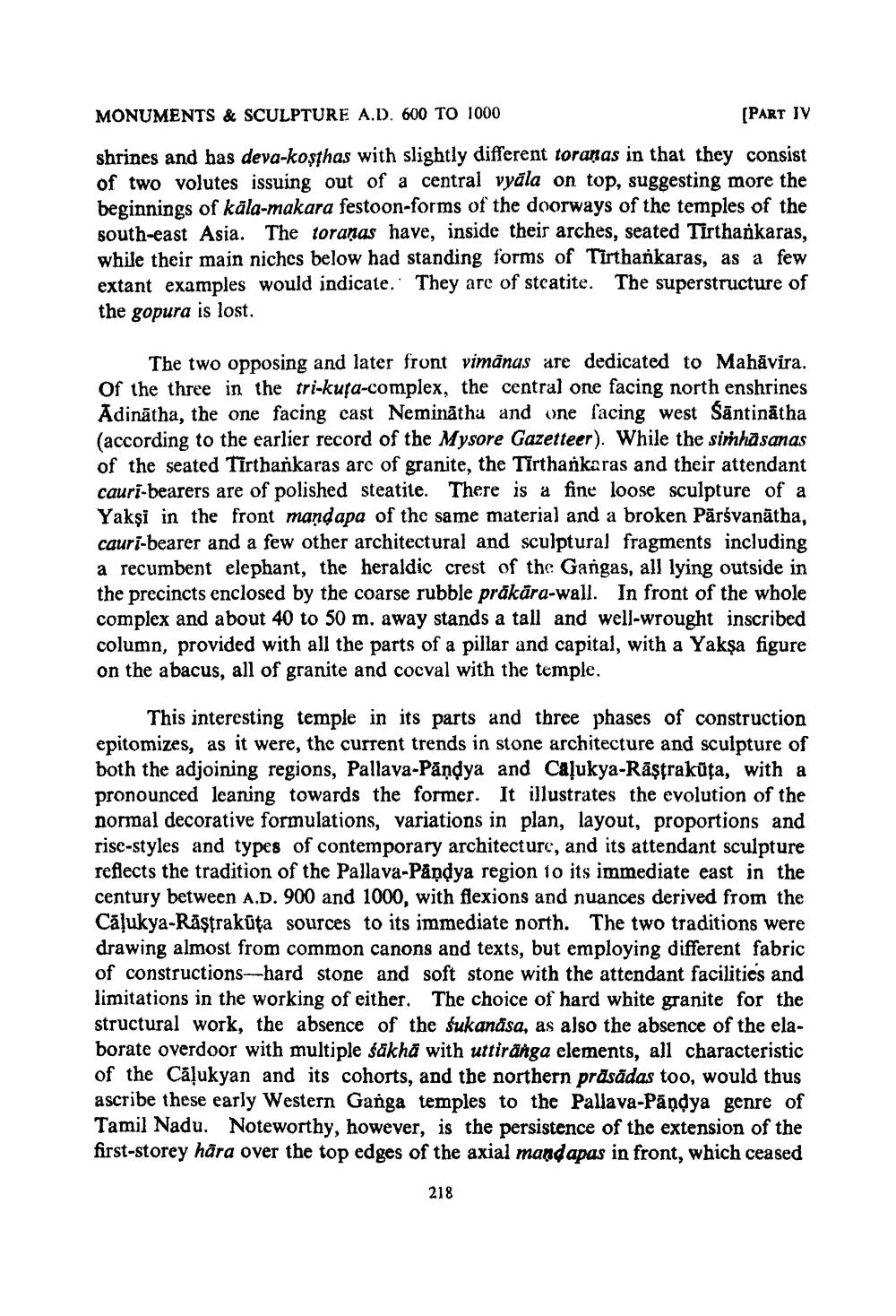________________
MONUMENTS & SCULPTURE A.D. 600 TO 1000
(PART IV
shrines and has deva-kosthas with slightly different toranas in that they consist of two volutes issuing out of a central vyāla on top, suggesting more the beginnings of kāla-makara festoon-forms of the doorways of the temples of south-east Asia. The toranas have, inside their arches, seated Tirtharkaras. while their main niches below had standing forms of Tirtharkaras, as a few extant examples would indicate. They are of stcatite. The superstructure of the gopura is lost.
The two opposing and later front vimānas are dedicated to Mahāvira. of the three in the tri-kuța-complex, the central one facing north enshrines Adinātha, the one facing cast Neminātha and one facing west Säntinātha (according to the earlier record of the Mysore Gazetteer). While the siṁhäsanas of the seated Tirtharkaras are of granite, the Tirtharkaras and their attendant cauri-bearers are of polished steatite. There is a fine loose sculpture of a Yakşi in the front mandapa of the same material and a broken Pārsvanātha, cauri-bearer and a few other architectural and sculptural fragments including
recumbent elephant, the heraldic crest of the Gangas, all lying outside in the precincts enclosed by the coarse rubble präkära-wall. In front of the whole complex and about 40 to 50 m. away stands a tall and well-wrought inscribed column, provided with all the parts of a pillar and capital, with a Yakşa figure on the abacus, all of granite and cocval with the temple.
This interesting temple in its parts and three phases of construction epitomizes, as it were, the current trends in stone architecture and sculpture of both the adjoining regions, Pallava-Pandya and Caļukya-Rāştrakūta, with a pronounced leaning towards the former. It illustrates the evolution of the normal decorative formulations, variations in plan, layout, proportions and rise-styles and types of contemporary architecture, and its attendant sculpture reflects the tradition of the Pallava-Påndya region to its immediate east in the century between A.D. 900 and 1000, with flexions and nuances derived from the Cáļukya-Răştrakūta sources to its immediate north. The two traditions were drawing almost from common canons and texts, but employing different fabric of constructions-hard stone and soft stone with the attendant facilities and limitations in the working of either. The choice of hard white granite for the structural work, the absence of the sukanása, as also the absence of the elaborate overdoor with multiple säkhā with uttiränga elements, all characteristic of the Calukyan and its cohorts, and the northern präsādas too, would thus ascribe these early Western Ganga temples to the Pallava-Pāņdya genre of Tamil Nadu. Noteworthy, however, is the persistence of the extension of the first-storey hâra over the top edges of the axial mandapas in front, which ceased
218




